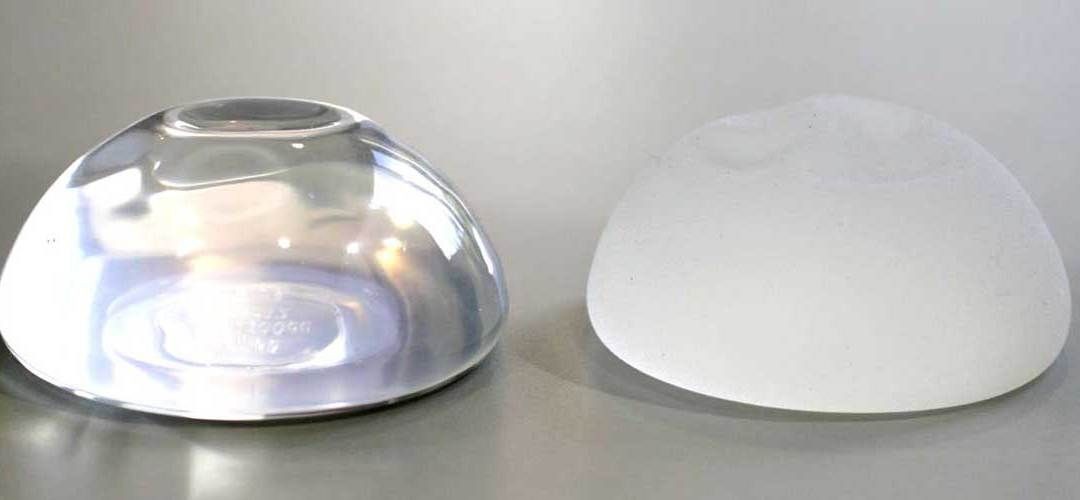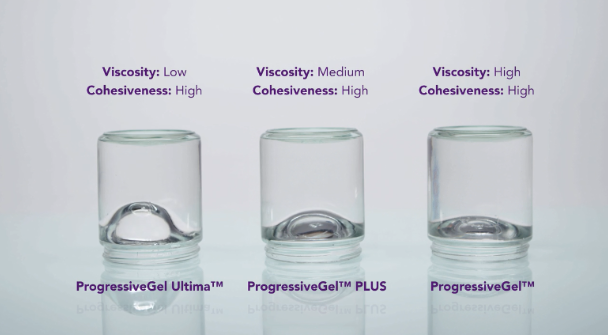What are the types of breast implants?
There are two types of breast implants. The silicone shell itself can either be filled with sterile saline (salt water), or a viscous silicone gel. They are different filler materials, which means that they have different properties. For instance, Saline is a non-coherent filler which will not resist a change in shape. Silicone gel, on the other hand, will resist a change in shape. To put it simply, saline will assume the shape of the container that it is in quickly, whereas silicone gel will retain its original shape for a while before gradually taking the new shape of the container. Both can be used in revision surgeries that correct or improve the result of an original surgery.


The silicone gel implant has a silicone outer shell that is filled with silicone gel, and can be either smooth or textured. They are typically pre-filled by the manufacturers. Such implants can be used for breast augmentation in women aged at least 22 years old, and for breast reconstruction in women regardless of age. Here are five FDA-approved silicone gel-filled breast implants available in the market:
- Allergan Natrelle (Premarket application number: P020056) (Approved November 2006)
- Allergan Natrelle 410 Highly Cohesive Anatomically Shaped Silicone-Filled Breast Implants (Premarket application umber: P040046) (Approved February 2013)
- Mentor MemoryGel (Premarket application number: P030053) (Approved November 2006)
- Mentor MemoryShape (Premarket application number: P060028) (Approved June 2013)
- Sientra’s Silicone Gel Breast Implants (Premarket application number: P070004) (Approved March 2012)
Silent ruptures of such implants can be detected through MRI screenings. It is recommended by the FDA that you do the screening three years post-surgery, and every two years afterwards. Motiva Implants Motiva implants have unique rheological properties for you to choose from. There are three options, namely ProgressiveGel Ultima, ProgressiveGel PLUS and ProgressiveGel,. All three have high cohesiveness. However, ProgressiveGel Ultima is low in viscosity, ProgressiveGel Ultima has a medium viscosity, and the ProgressiveGel has a high viscosity.
Motiva Implants
Motiva implants have unique rheological properties for you to choose from. There are three options, namely ProgressiveGel Ultima, ProgressiveGel PLUS and ProgressiveGel,. All three have high cohesiveness. However, ProgressiveGel Ultima is low in viscosity, ProgressiveGel Ultima has a medium viscosity, and the ProgressiveGel has a high viscosity.

In addition, Motiva implants have received several approvals from authorities across the globe. Not only are the implants now underway for FDA-approved in America, the CE mark has also been obtained from European countries. In countries within Asia, no uniform certification is available. Thus far, Motiva implants have the 975NK/BYT-TB-CT certification in Vietnam, and the 16-329 certification in South Korea just to name a few. Overall, Motiva implants have been approved by more than 60 countries all over the world.
Saline-filled breast implants have a silicone outer shell filled with sterile saltwater solution. Some shells are pre-filled with silicone, while others have to be filled up by the surgeon during the operation procedure. Like their silicone counterpart, they too have either smooth or textured shells. This type of breast implant can be used for breast augmentation for women who are at least 18 years old, and for breast reconstruction for women of all ages.
Here are some FDA-Approved Saline breast implants:
Ideal Saline-Filled Breast Implant (Premarket Application Number: P120011)
- Patient Labeling (2014)
- Physician Labeling (2014)
- Approval Order
- Summary of Safety and Effectiveness
Allergan (formerly called McGhan and Inamed) Medical RTV Saline-Filled Breast Implant (Premarket application number: P990074)
- Patient Labeling (Nov 2004)
- Physician Labeling (2005)
- Approval Order
- Summary of Safety and Effectiveness
Mentor Saline-Filled and Spectrum Breast Implants (Premarket application number: P990075)
- Patient Labeling (2009)
- Physician Labeling (2009)
- Approval Order
- Summary of Safety and Effectiveness
Saline VS Silicone Breast Implants
Silicone gel implants are popular in recent years as they are perceived to be more natural-looking. Since they are softer to the touch, they look and feel more like the natural breast. There is even a highly cohesive silicone implant known as the ‘Gummy Bear’ implant, which provides a long-lasting natural shape to the augmented breast.
Needless to say, the success of both implants will depend on the skill of the surgeon, the quality of the implants, your unique body composition and adaptability, as well as maintenance. That said, some saline implants may be filled via a valve during the operation. This can cause an added risk of leakage depending on the skill of your doctor. This risk is not present in silicone gel implants as they arrive pre-filled from the manufacturer.
As the saline breast implants are firmer than silicone ones and natural breast tissue, it is subjected to comparatively more rippling and wrinkling outcome. This is important to note if you are someone with thin tissues since any irregularities in the implant contour of your augmented breast will be more striking in terms of both the look and feel. This is because the more tissue you can put in front of the implant, the more natural looking your augmented breast will be.
While silicone implants may seem like the better option, it is important to note that saline breast implants can be absorbed by the body in the event of rupture.
Conclusion
Realistically speaking, all breast implants will likely need to be removed or replaced in the long run. It is important to do extensive research before committing to a professionally recommended the type of breast implants. Currently, the available brands of breast implants in Singapore are Allergan Natrelle, Mentor and Motiva Implants.
